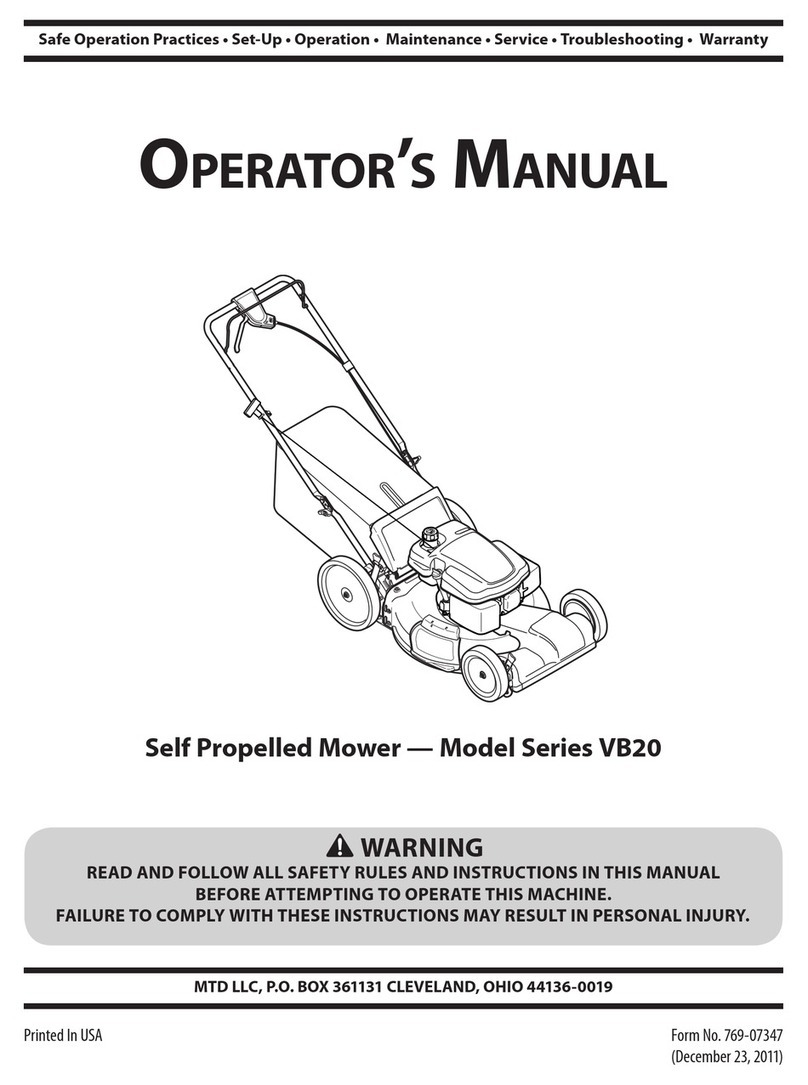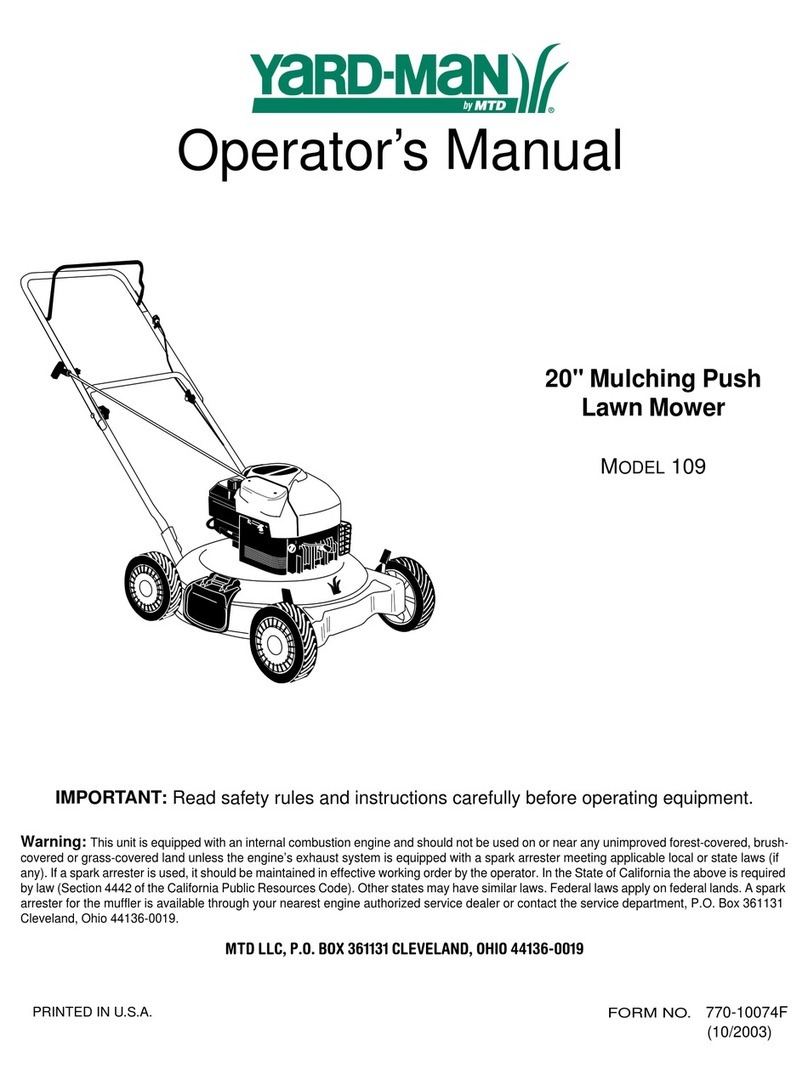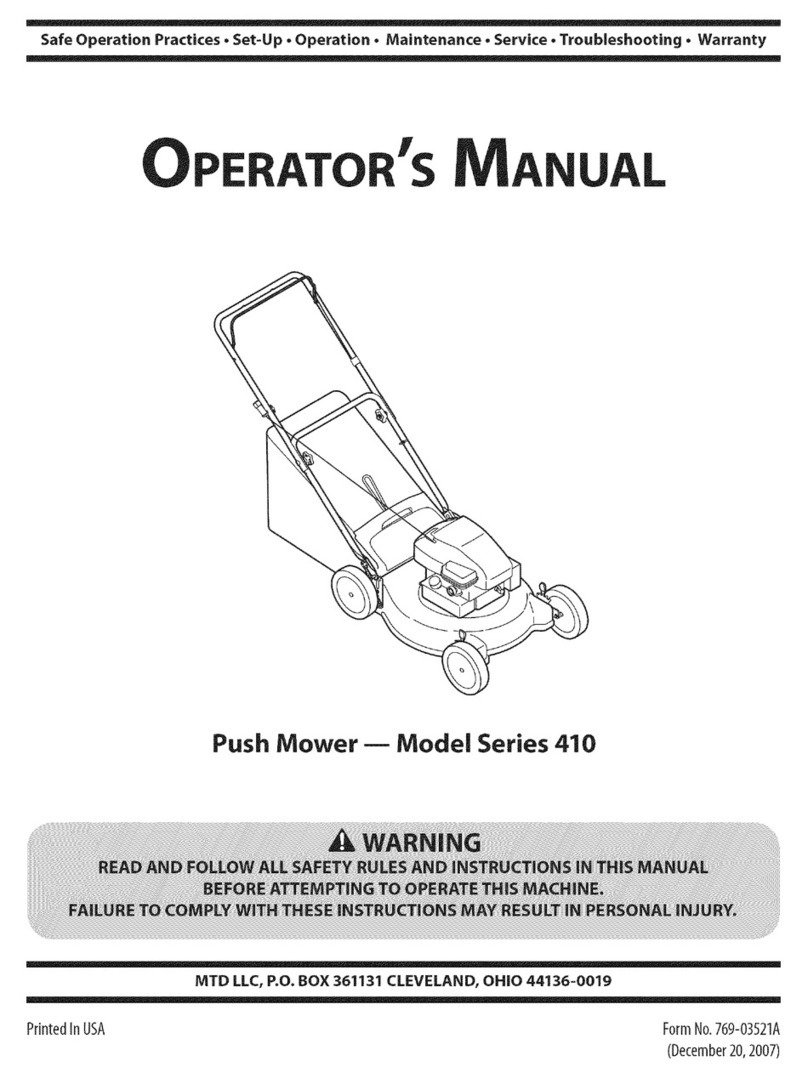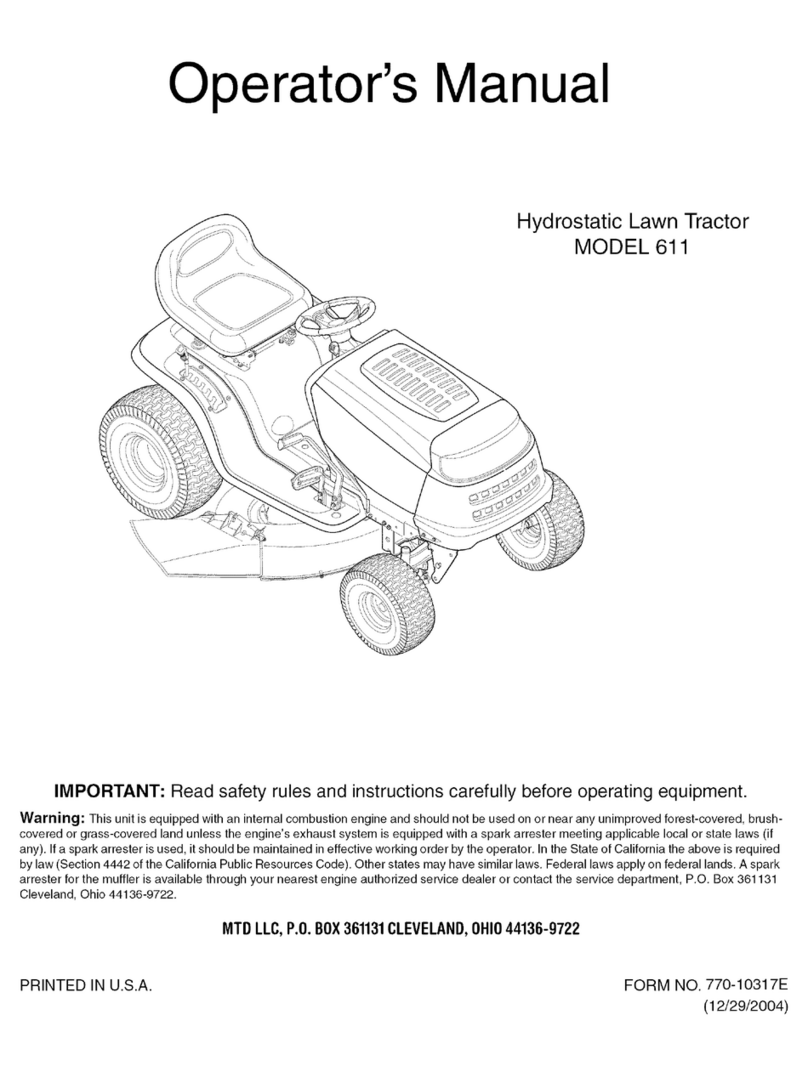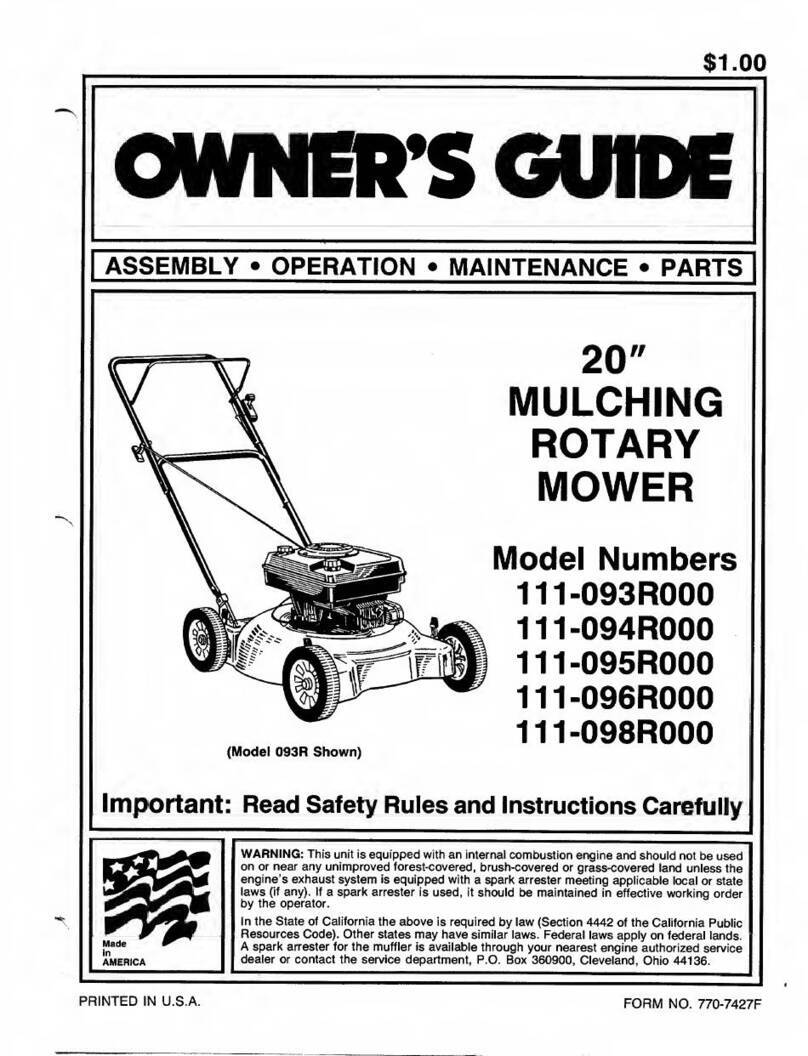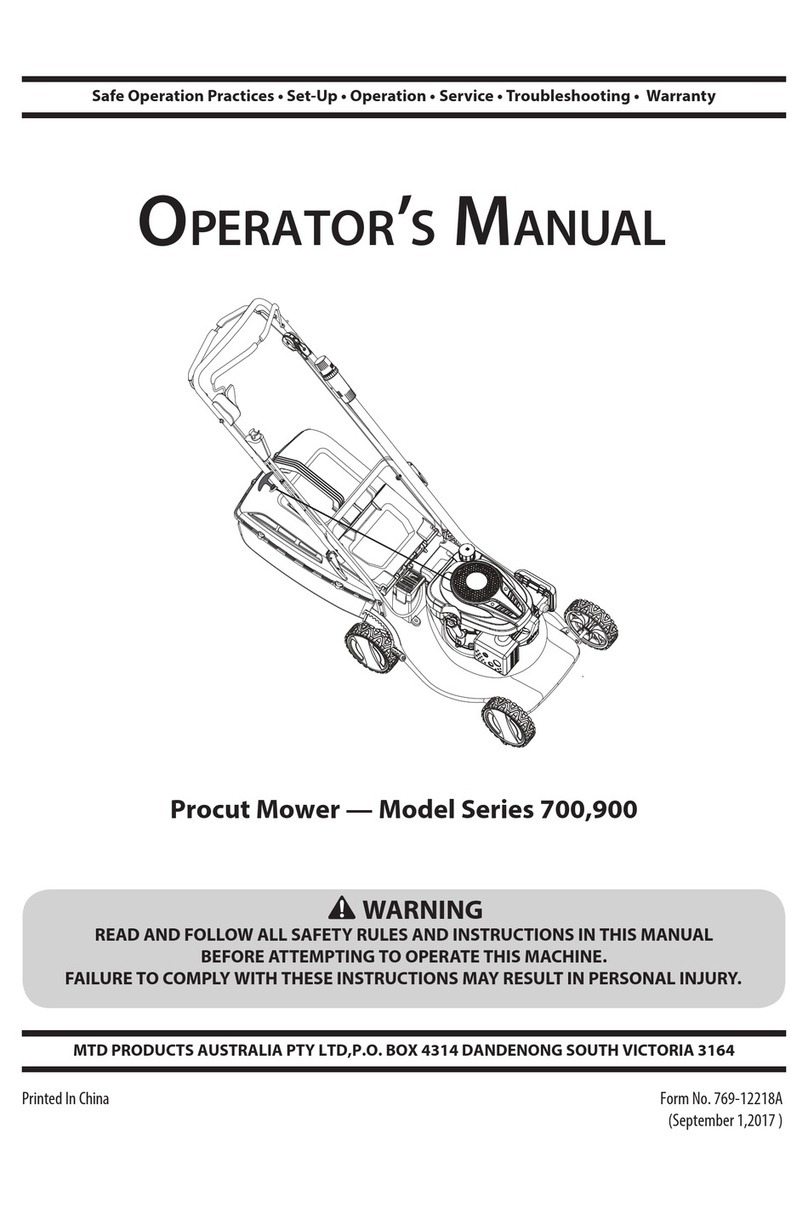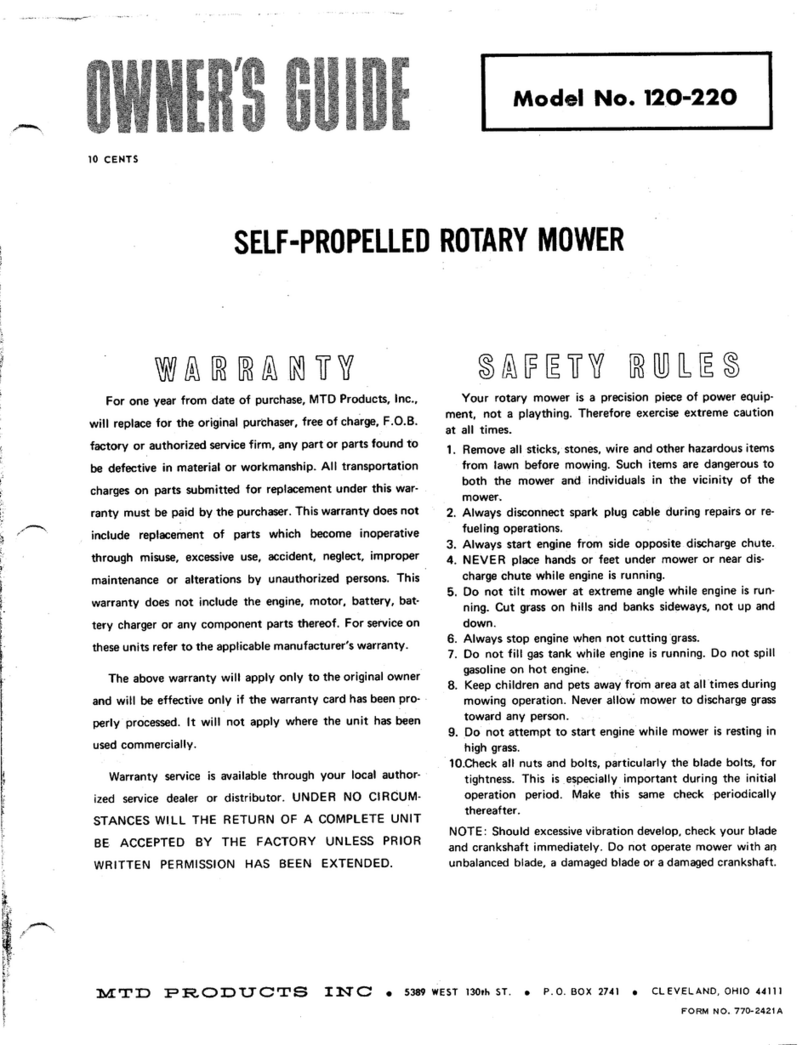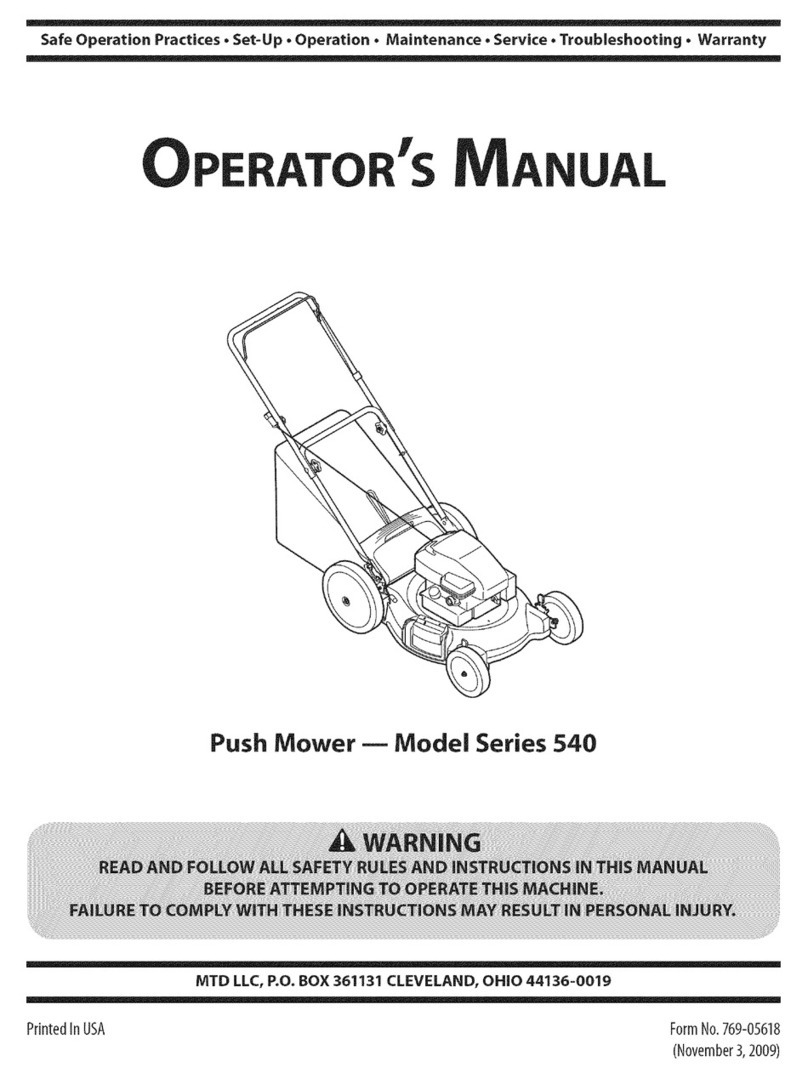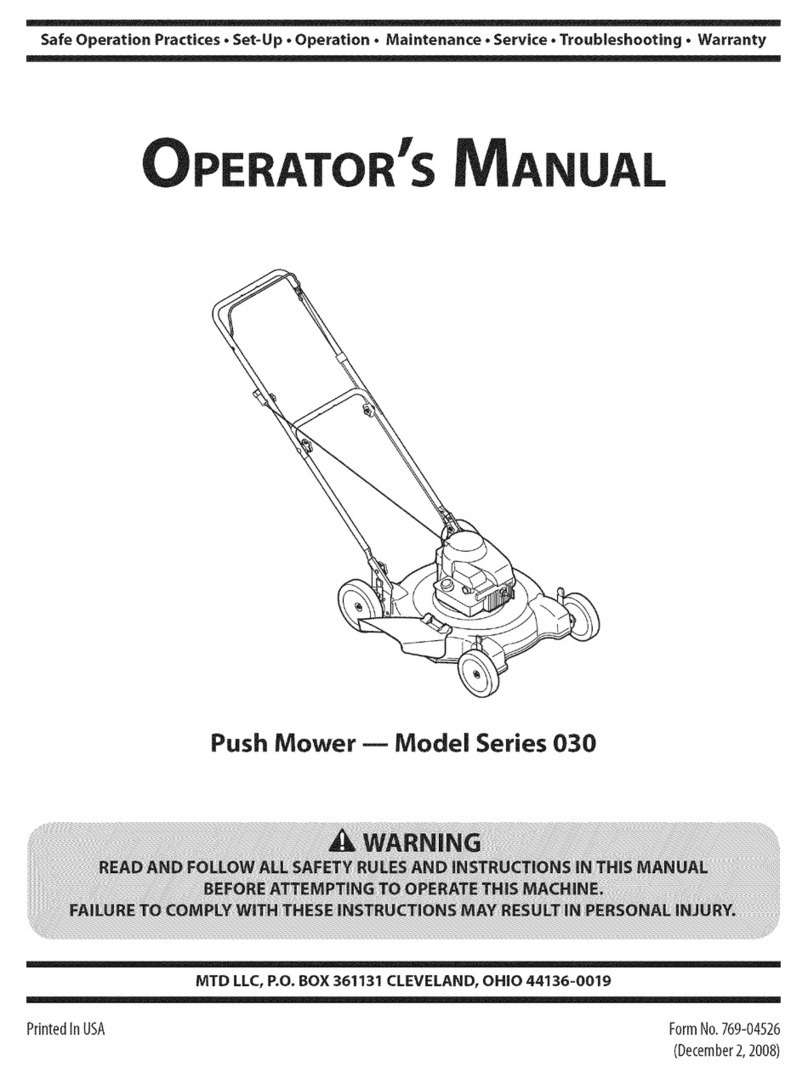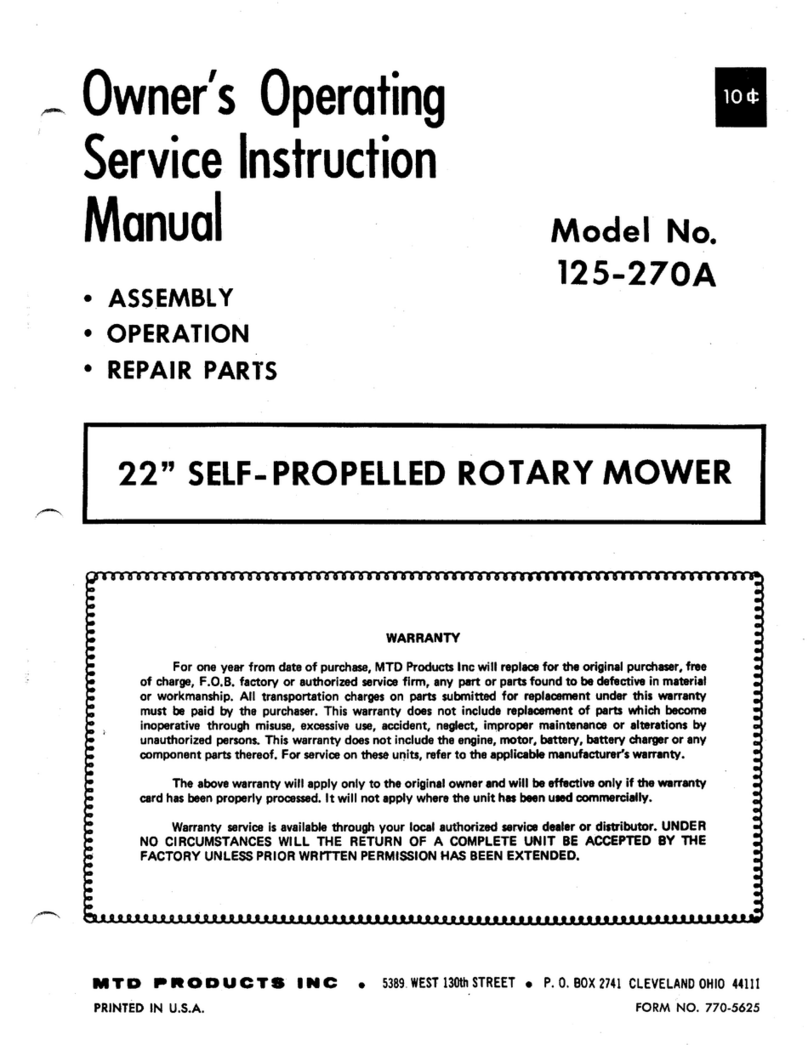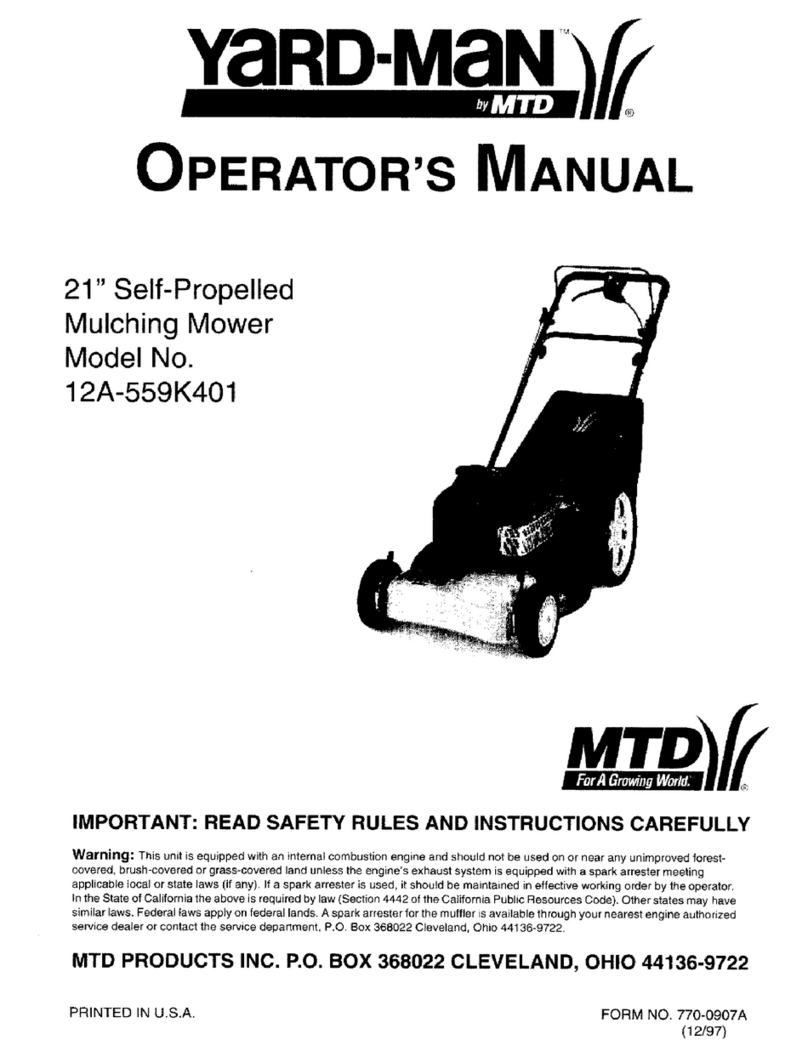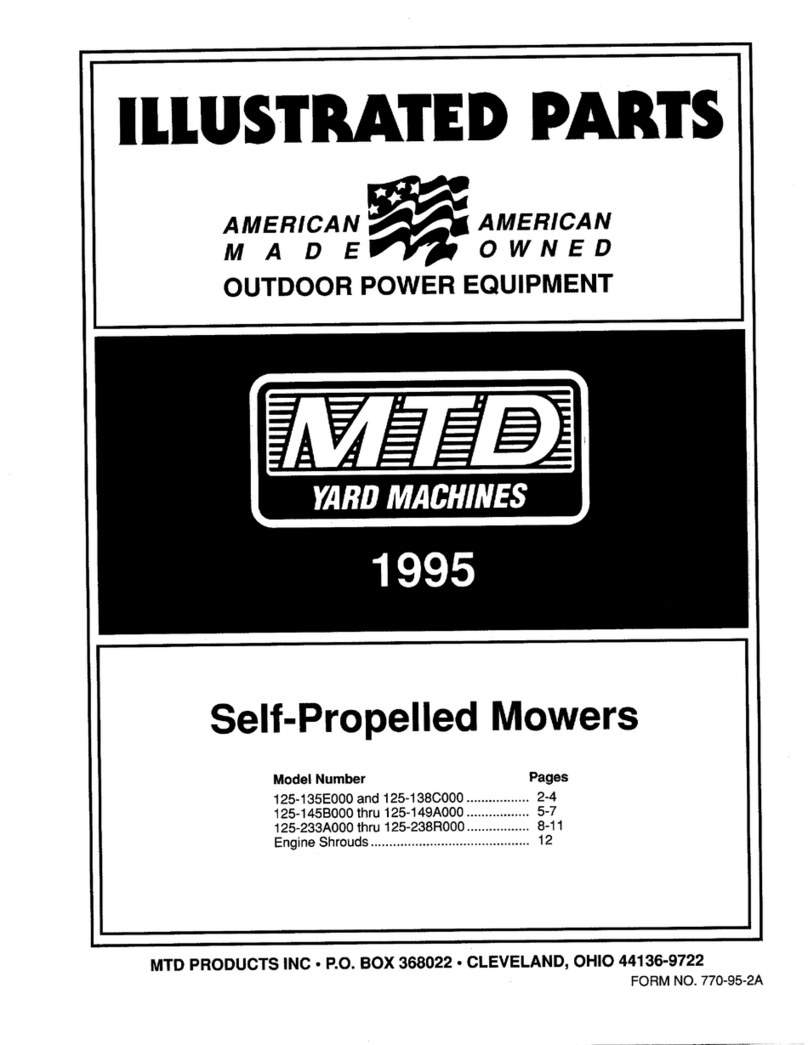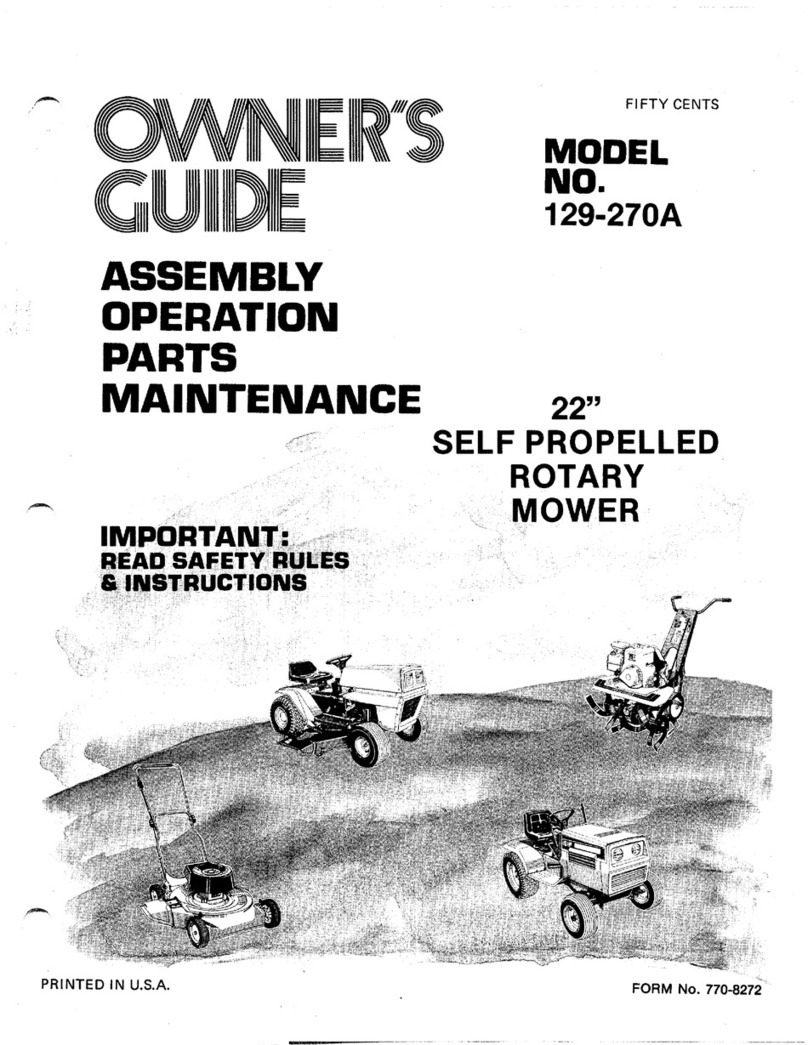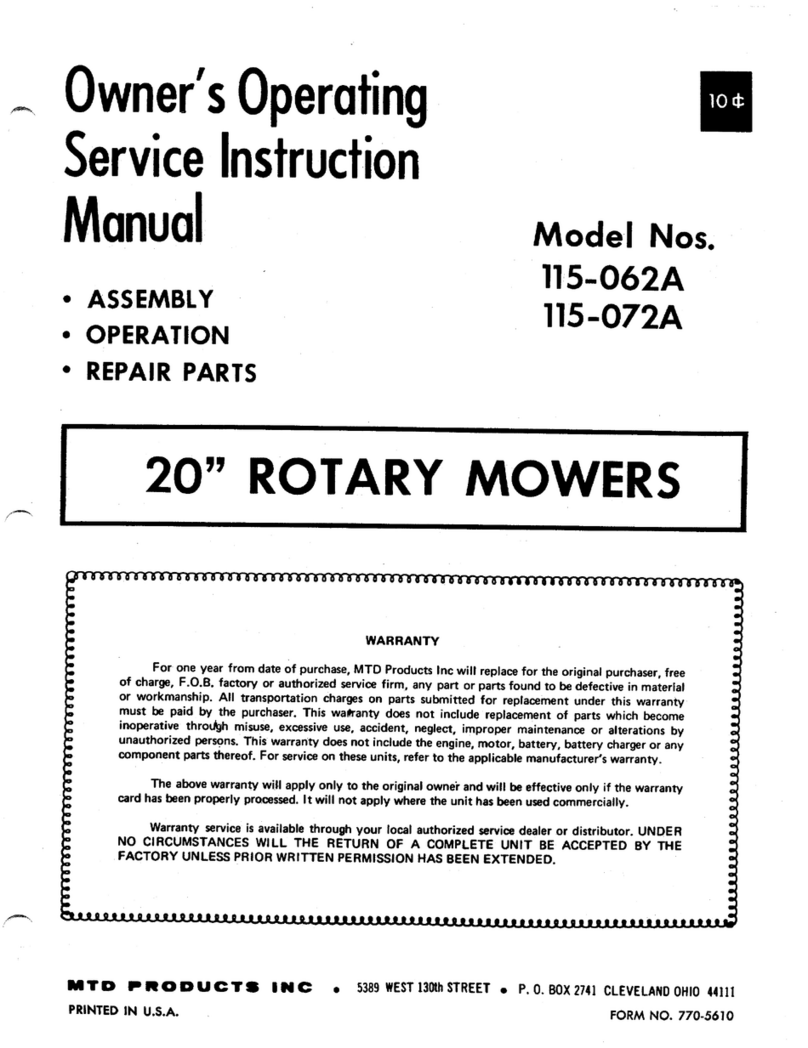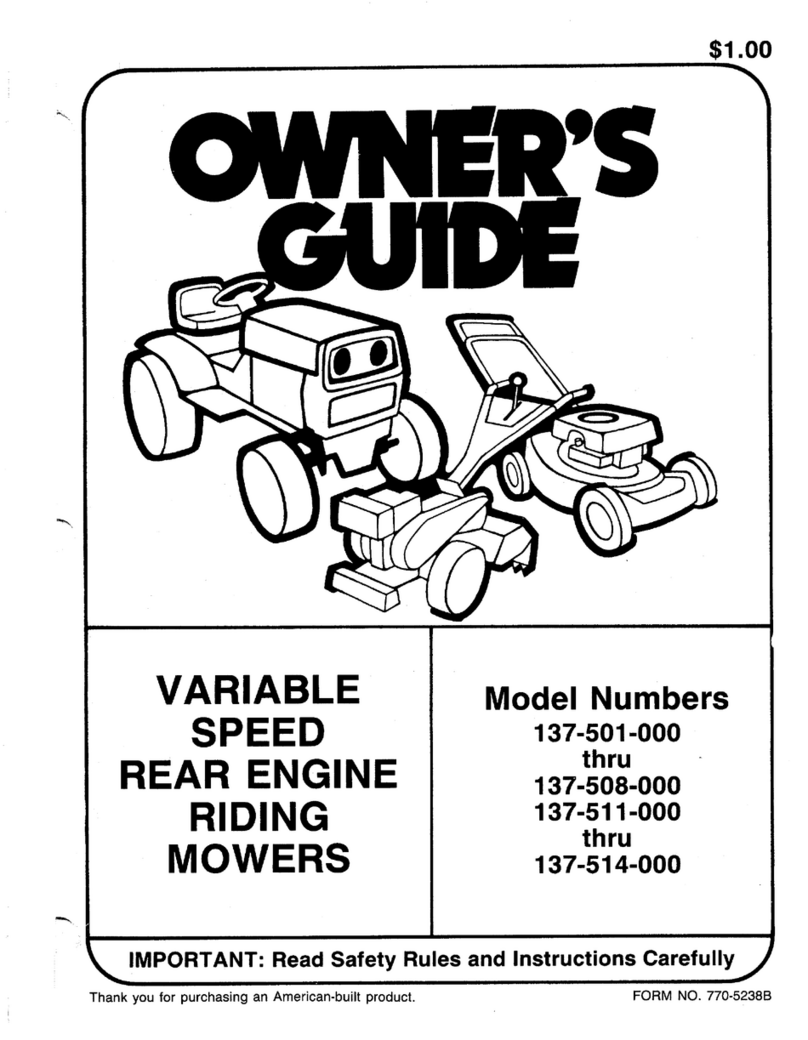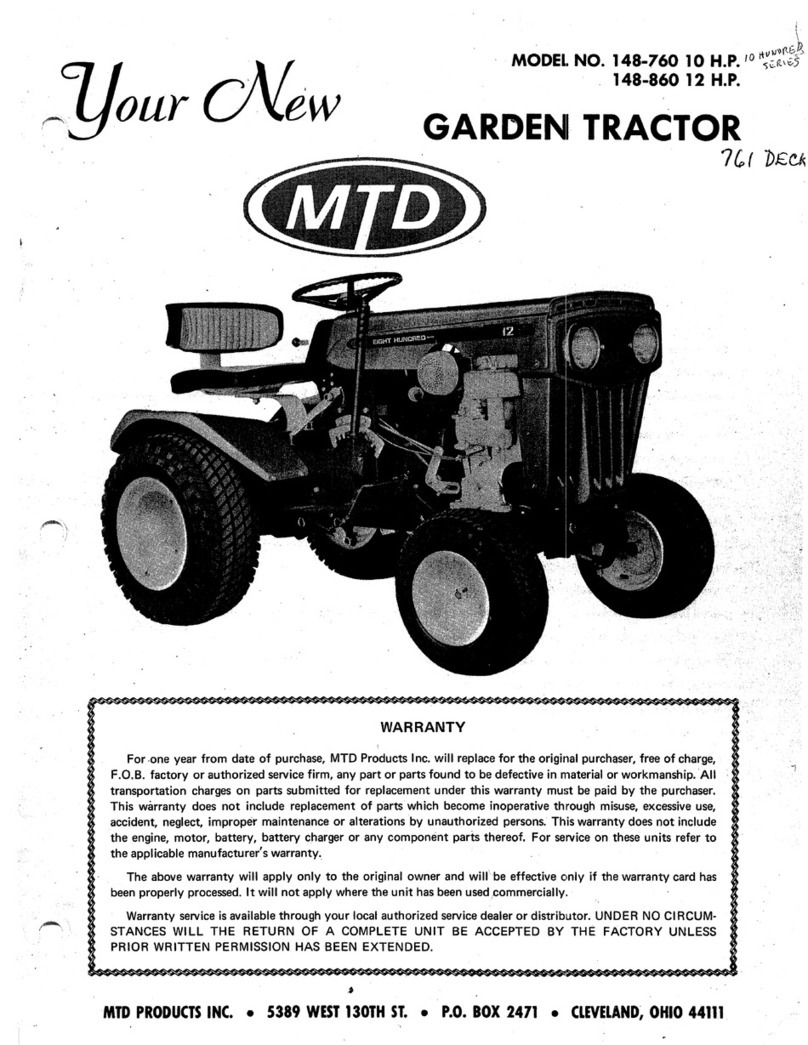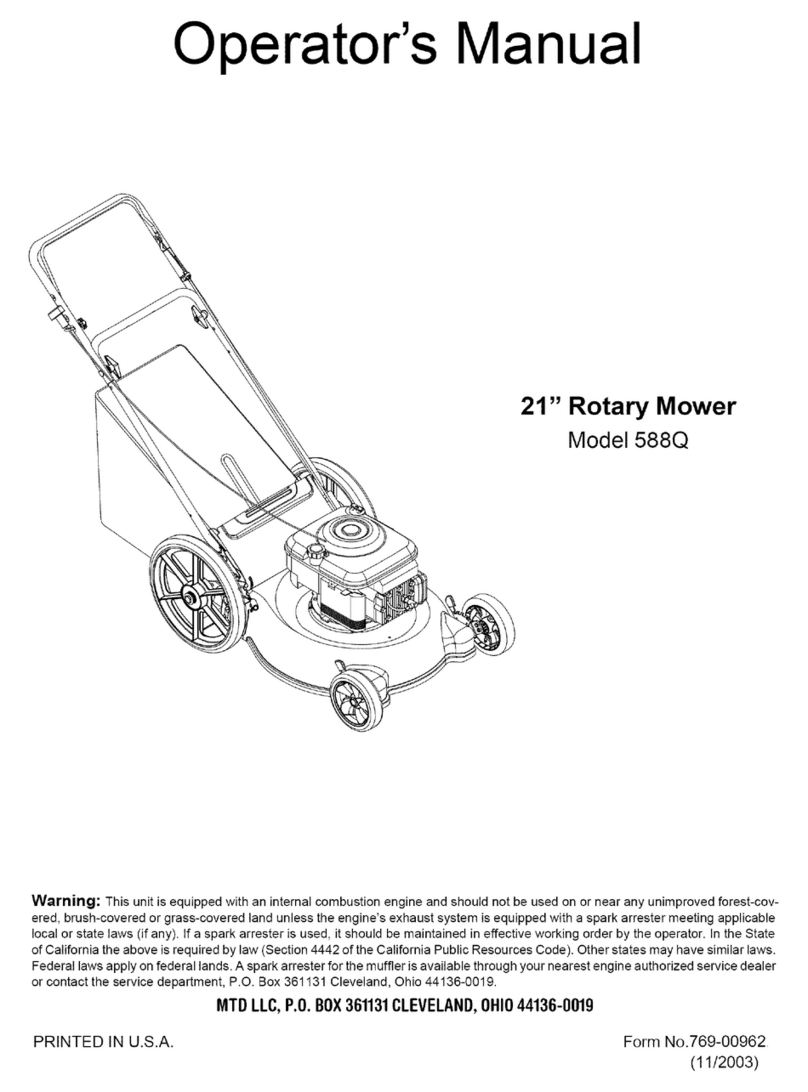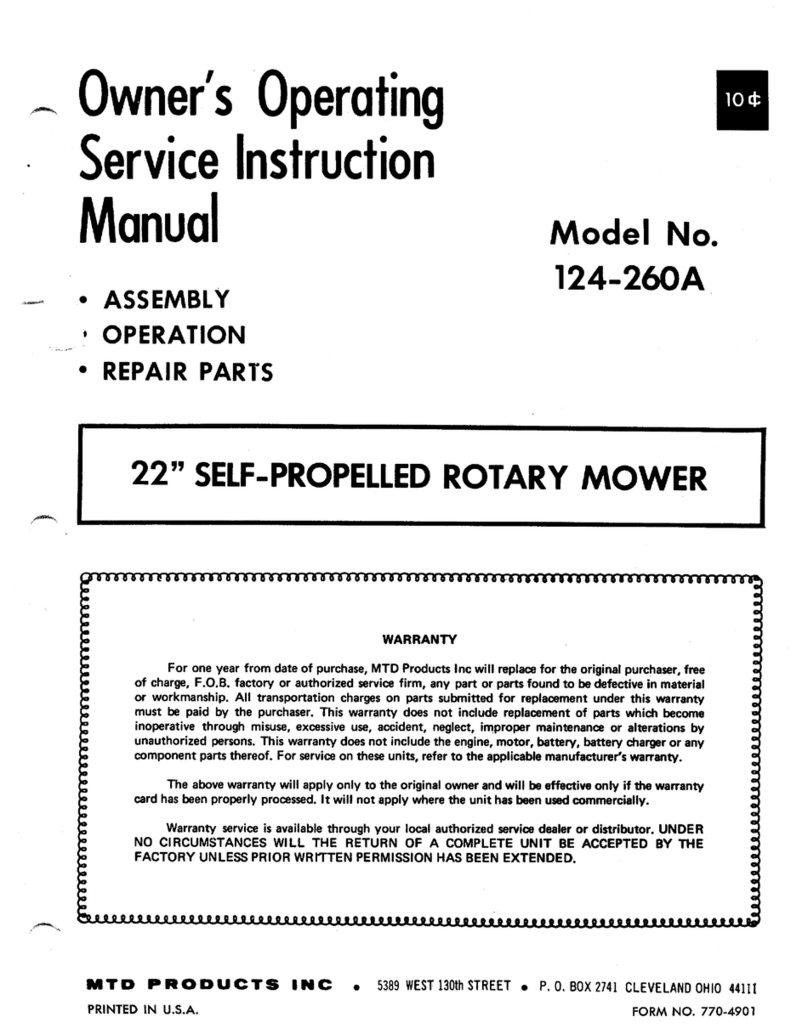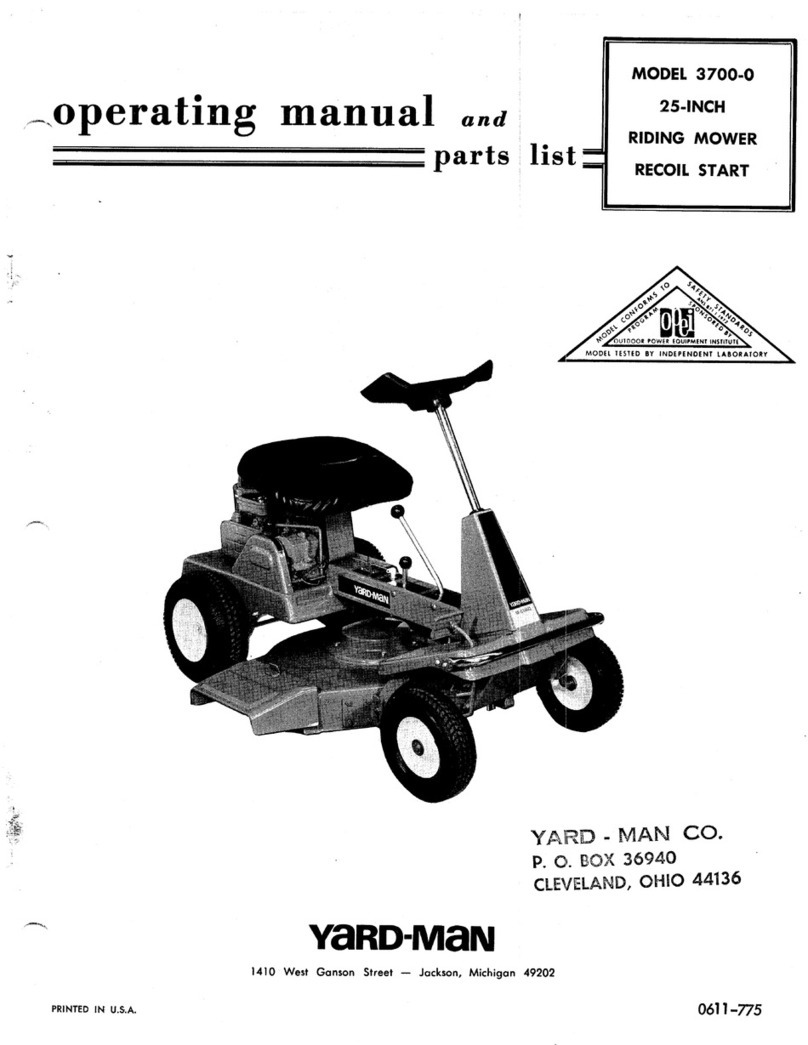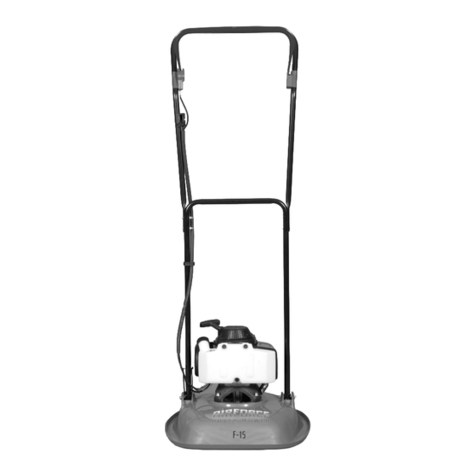
8
For your safety
EN
Contents
Identification plate information
These specications are very important for subse-
quent identication when ordering spare parts and
for customer service. You will nd the rating plate
under the driver’s seat. Copy all information stated
on the identication plate into the following space.
You can nd these and further details on the device
in the separate CE declaration of conformity, which
is a constituent part of this operating manual.
For your safety
Use the device properly
This device is designed to be used
- as a riding mower for mowing lawns of houses
and gardens.
- with accessories which are approved expressly for
use with this lawn tractor,
- In accordance with the descriptions and safety
instructions given in these operating instructions.
Any other use is not an intended use. Improper use
is not covered by the warranty and the manufacturer
will reject any liability. The user is liable for all inju-
ries to third parties and damage to their property.
Unauthorised changes to the device exclude liability
of the manufacturer for any resulting damage and/
or injury.
This mower is not licensed for use on public roads
or for transporting people.
General safety instructions
Before operating the appliance for the rst time,
please read these operating instructions carefully
and act accordingly.
Inform other users how to operate the machine
properly.
Operate the mower only in the technical condition
in which it has been provided and delivered by the
manufacturer.
Keep these operating instructions in a safe place
where they are readily available whenever the
machine is used. If the device changes ownership,
hand over the operating manual with it.
Spare parts and accessories must satisfy the
requirements specied by the manufacturer.
Therefore only use original spare parts and original
accessories or spare parts and accessories that
have been authorised by the manufacturer.
Arrange for repair work to be carried out by a spe-
cialist workshop only.
Before working with the device
Do not use the device if you are tired or ill.
Any person intending to use this device must not be
under the inuence of intoxicants such as alcohol,
drugs or medicines.
Persons under the age of 16 are not permitted to
operate this mower.
This device is not intended for use by persons
(including children) with reduced physical, sensory
or mental capabilities, or lack of experience and/
or knowledge, unless they are under supervision or
have received instructions concerning how to use
the device by a person responsible for their safety.
Children should be supervised to ensure that they
do not play with the device.
Before you begin work, make sure that you are
familiar with all attachments and operating controls
as well as their functions.
Store fuel only in approved containers and never
close to sources of heat (e.g. stoves or hot-water
boilers).
Replace the exhaust unit, tank or fuel cap if they
become damaged.
Observe guidelines when connecting towed items
or attachments to the mower. Driving performance,
especially steering, braking capability, and overall
stability are aected by attachments, towed items,
ballast weights and the weight of a grass catcher
when full.
When working with the device
When working with or on the unit, wear appropri-
ate work clothes (e.g. safety boots, long trousers,
tight-tting clothing, goggles and hearing protection).
Working without ear protection may result in loss of
hearing.
Do not operate the mower unless it is in perfect and
safe working order.
For your safety........................................................ 8
Assembly .............................................................. 10
Your mower at a glance .........................................11
Operation .............................................................. 12
Tips on lawn care ................................................. 14
Transporting ......................................................... 14
Cleaning/servicing ................................................ 15
Shutting down the unit .......................................... 16
Warranty ............................................................... 16
Information on the engine ..................................... 16
Troubleshooting .................................................... 17
